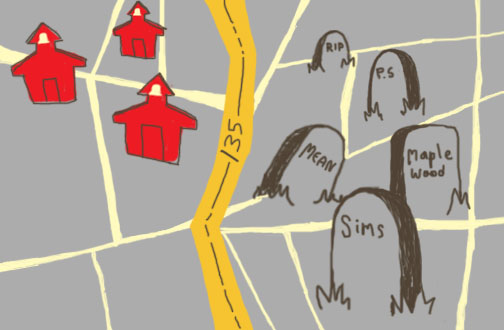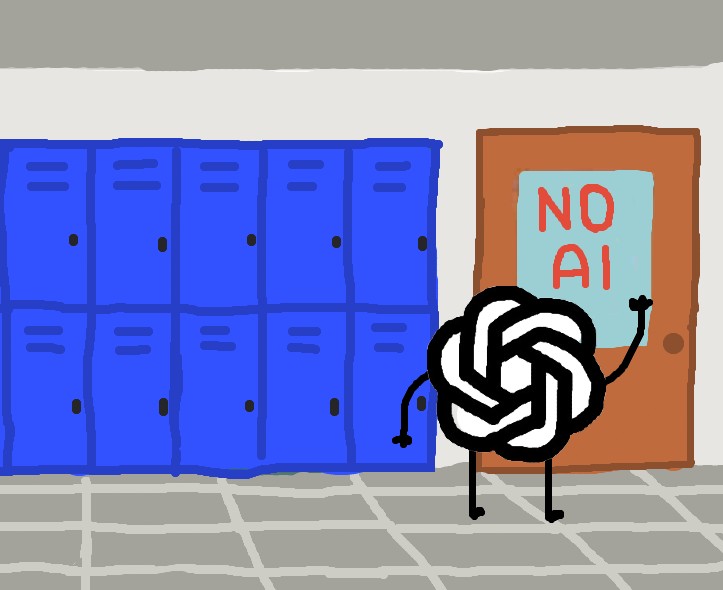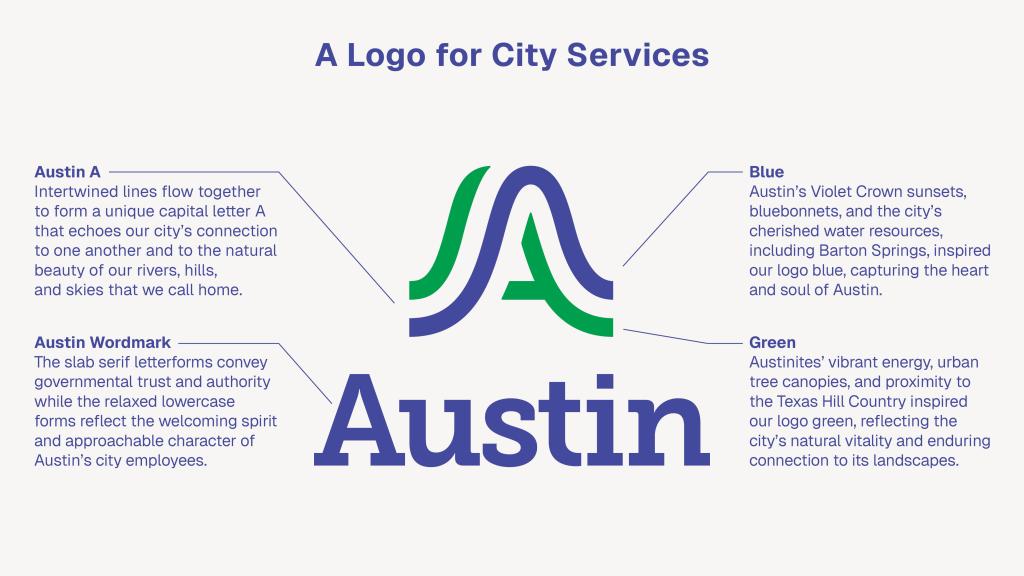Austin is known far and wide for its funky small businesses, hippie residents and enviable live music scene. It’s why we all love Austin so much, but unfortunately, it’s also why the city is expanding so rapidly and putting the city’s original residents at risk. As economically advantaged, predominantly white residents move to the more affluent parts of Austin, subsequently raising property taxes in the area, socioeconomically disadvantaged families, mostly from minority ethnic groups, are forced out of urban areas. This migration further enforces the already intense segregation in Austin at the I-35 line. According to a dot map provided by The Austin American-Statesman, there is a stark divide between the white population and the black/Hispanic populations on either side of I-35. This is due to the City of Austin Plan of 1928, which deliberately segregated the Austin population by pushing black families east of I-35.
Segregation in Austin housing leads to segregation in Austin schools. The kids who are zoned to schools in East Austin have historically received a lower-quality education than kids who are zoned to schools in west Austin due to the economic imbalance between families in the two regions. The best teachers, the best parent booster organizations, and the best facilities are designated to west Austin while the schools on the east side are forced to fend for themselves, thus perpetuating the cycle of poorer kids staying poor because they don’t receive the education they need.
In an attempt to remedy the cycle that has plagued our city for so long, AISD has launched a new initiative called School Changes.
“These school changes will include a variety of updates to accommodate more equitable programming and learning environments that will support students across the district to be successful in college, career and life,” reads the initiative announcement on the AISD website.
This AISD initiative is well-meaning, but it has not been executed effectively to this point. Granted, it is difficult to launch such a huge initiative that will ameliorate the entrenched problems that have plagued our city and our district for generations.
The lack of a clear explanation from the district about the roots of this initiative, however, makes it appear as if the district lacks empathy. Some community members were not even aware until recently that their neighborhood schools were closing. Since the initial shock, the board has realized that their first attempts at unveiling the plan were lacking. KUT reported that at a campus community meeting at Webb Elementary School on Sept. 25, district leaders conveyed that exact message to the community members who had come to learn about the School Changes plan.
“We did not do a good job of communicating this to the communities,” AISD Operations Officer Matias Segura told Webb parents when they shared that they found out about the proposed school closures from local news reports. “We are very, very sorry for the hurt we caused. We are committed to improving. We are listening so we can improve.”
The frustrating experience of the Webb parents can be replicated by anybody who visits the AISD website trying to learn about the plan. The information currently available on the AISD website is more about public relations than it is about conveying specific, helpful information about important topics in the district. The online description of this process is difficult to read and understand, even for a student who has spent all their years of education in AISD. People want to know what exactly this process will look like for themselves and for their schools, but the information provided to the general public is very vague.
One part of the plan that is not vague is the plan to shut down 12 schools and relocate the students over a span of multiple years. The list of schools includes 10 elementary schools and two middle schools, seven of which are on the east side of I-35 and three of which are close to I-35.
By closing down so many elementary schools on the east side of Austin, the district is not setting up young children in those neighborhoods for success. Education will become harder to access, and that weak start in life will impede those children’s potential to succeed. Education should be equitable and accessible across the district, and the shuttering of six elementary schools on the east side overlooks this principle and disadvantages an entire socioeconomic group in Austin.
None of the schools AISD has selected to close are in the northwest area of Austin. In the face of this situation, many parents at the schools that are deriding the new plan “racist.” On the other hand, some parents at higher-performing schools are concerned that their students will be sent to lower-performing schools under the rezoning of the district. Many of these parents voiced their concerns at the first meeting about School Changes at Bedichek Middle School.
These comments have received much backlash from AISD parents at the so-called “under-performing” schools. An east Austin education advocacy group called PRIDE of the Eastside held a mock game show called “Who wants to be an anti-racist?” prior to an AISD board meeting.
“How we judge a school to be failing or not is quite flawed given the inherent inequities based in testing, school discipline, PTA fundraising, teacher experience and turnover, etc.,” Emily Sawyer, a Martin Middle School parent, told the Statesman. “If all of these parts of the system put your black and brown and socioeconomically disadvantaged kids at a disadvantage, then there is something wrong with the system, not the kids.”








